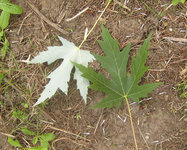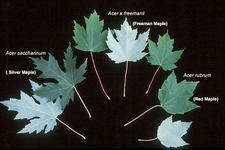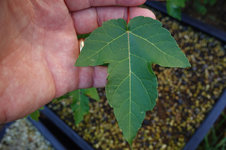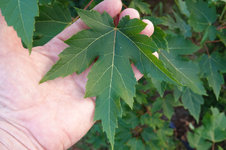Can silver maple be a good bonsai?
Well, one can certainly put time into using bonsai techniques on any woody plant and you will see some response.
The Japanese maple is an excellent subject for bonsai, in fact deciduous bonsai might be said to have been developed in part to enjoy Japanese maples. The have good spring and autumn colors that give many weeks of enjoyment. Leaf node reductions are possible, so a nice sense of proportion is possible. Alll good traits in Japanese maples.
Silver maples leaves start big and are more difficult to reduce uniformly. Spring leaf color is short lived, mostly yellow. Autumn leaf color is silver maple is at best a short lived, lest than a week, yellow. It is one of the least colorful of the maples. Silver maple does not reduce node lengths as nicely as JM or trident or Amur maples, leaf petioles tend to be a bit long. All in all there are better maples to put time in on. If you need a cold hardy maple. try Amur maple, Acer ginnala. If you are in zone 6b or warmer try Japanese maples. If you really want North American natives, try Acer rubrum (red maple) or Acer saccharum (sugar maple). If you try sugar maple, go big because they do not reduce easily, but they have beautiful spring and autumn colors, especially autumn colors, that make them worth working with. Silver maples have always disappointed me.











